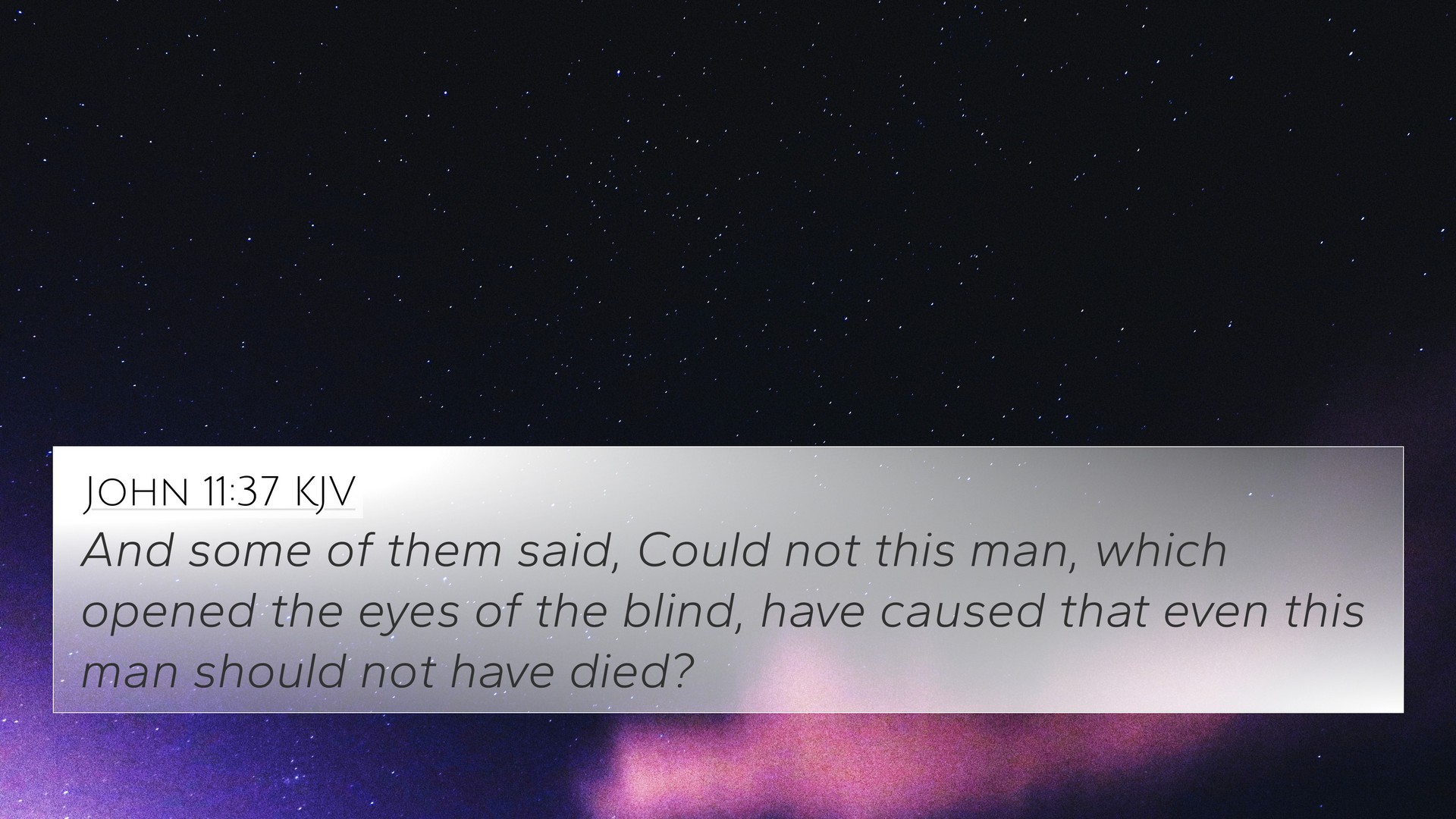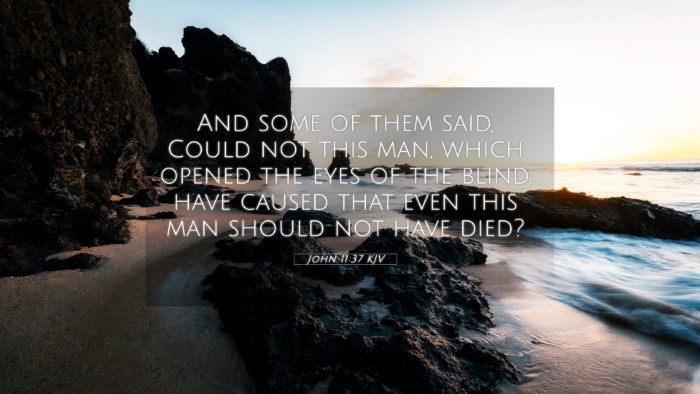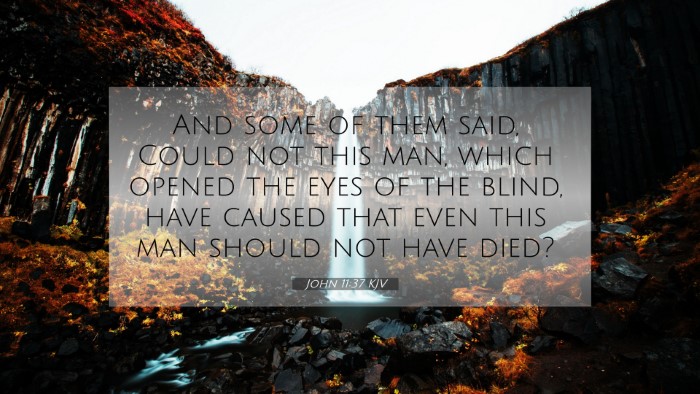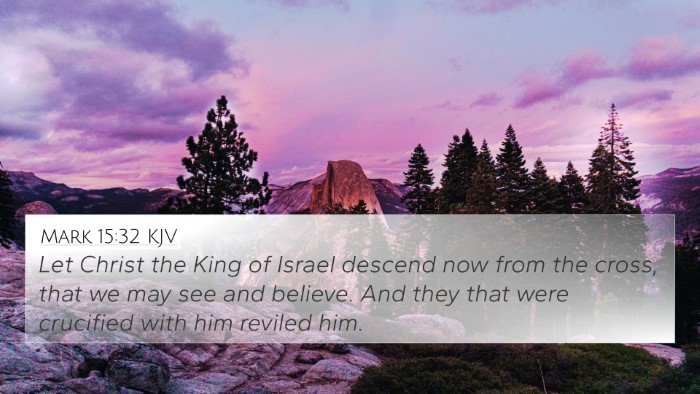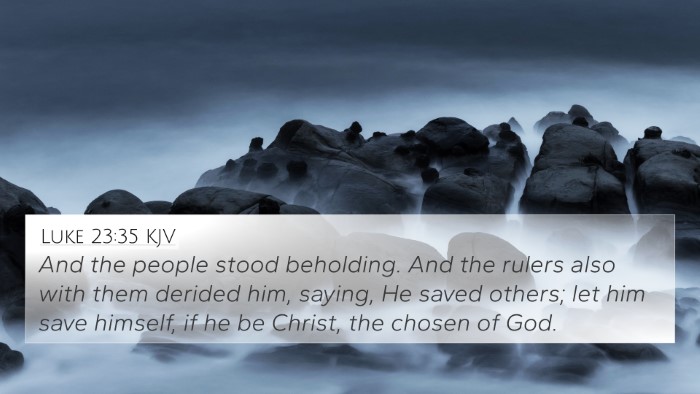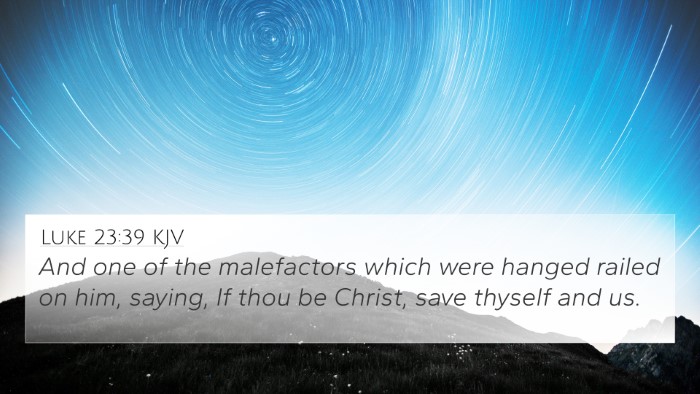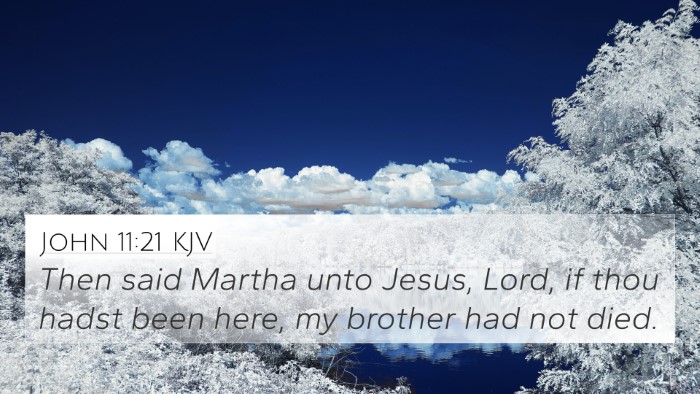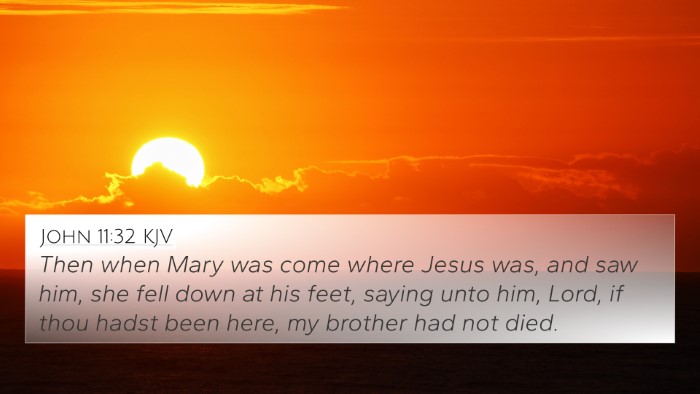Understanding John 11:37
John 11:37 states, "But some of them said, 'Could not he who opened the eyes of the blind man have kept this man from dying?'" This verse occurs in the context of Jesus mourning the death of Lazarus and serves as a critical reflection on doubt, faith, and divine ability.
Context of the Verse
This moment captures the mixed emotions during Jesus’ visit to Mary and Martha after the death of their brother, Lazarus. The crowd present was witnessing both the sorrow of the sisters and the powerful compassion of Jesus. Here, public opinion reveals skepticism about Jesus’ capability to prevent death.
Analysis from Public Domain Commentaries
Matthew Henry’s Commentary
Henry emphasizes the duality of the crowd’s perception. Some expressed wonder at Jesus' capabilities in healing, questioning why He didn’t act to save Lazarus. This illustrates human frailty and the tendency to challenge God’s plans when they do not align with our expectations.
Albert Barnes’ Commentary
Barnes highlights the contrast between faith and doubt. He notes that while some believed in Jesus, others could not reconcile His miracle-working power with their immediate reality of death. This struggle signifies a common theme in the Gospels about the nature of faith in adversity.
Adam Clarke’s Commentary
Clarke focuses on the spiritual implications of this verse. He suggests this passage illustrates humanity’s misunderstanding of divine purpose. The questioning by the crowd signifies a lack of comprehension regarding Jesus’ mission, as it was not merely to alleviate physical suffering but to demonstrate God’s glory through resurrection.
Thematic Connections
John 11:37 opens discussions on key Biblical themes, including faith, doubt, sorrow, and resurrection. The questioning heart reflects a human tendency to look externally for answers, encouraging the faithful to seek deeper understandings of God’s promises and purpose.
Bible Verse Cross-References
This verse connects to several other passages that enhance our understanding of its message and the broader themes of faith and divine intervention:
- John 9:6-7: The healing of the blind man demonstrates Jesus' miraculous power.
- Luke 7:12-15: Jesus raises the widow’s son, illustrating His authority over death.
- Romans 8:28: All things work together for good, reflecting God’s sovereignty in His plans.
- 1 Peter 5:7: Casting all cares upon Him suggests that God is attentive to our suffering.
- John 14:1: Jesus encourages belief in God and trust in Him, a call for faith despite questions.
- John 11:25-26: Jesus asserts that He is the resurrection and the life, anchoring faith in Him.
- Psalms 46:1: God as our refuge and strength reflects the comfort offered during times of distress.
Comparative Bible Verse Analysis
In analyzing John 11:37, we see parallels to similar situations in the Gospels where faith is tested in the face of inexplicable human suffering. The discussions parallel with those in Mark 5:35-36 and John 9:39-41, where societal reactions to Jesus’ miracles provoke questions about belief and the understanding of divine intervention.
Tools for Bible Cross-Referencing
To delve deeper into these connections, various tools are available:
- Bible Concordance: Helps find keywords and their occurrences throughout Scripture.
- Bible Cross-Reference Guide: A structured approach to find related verses.
- Cross-Reference Bible Study: A method that encourages comparing passages for deeper insight.
Conclusion
John 11:37 is not merely a statement questioning the actions of Jesus but opens a profound discussion about human doubt in the face of divine power. The verse calls the reader to explore faith amidst confusion, utilizing cross-referencing tools to enrich one’s understanding of Biblical connections. By examining this verse and its associates, believers are encouraged to move deeper into the narratives and intentions of the Scriptures.
